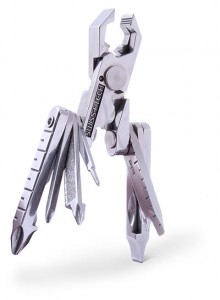
#127 – May 14, 2010
While this newsletter usually talks about kosher wine and the amazing wineries that produce top-notch wine, from time to time I also try to provide some basic advice or guidance on how to generally enhance your enjoyment of wine. Some of these annual or bi-annual topics I have covered in the past include how to order wine in restaurants, the correct serving temperature for different wines, comparative tasting and how to choose a wine glass (and the effect such a choice has on your enjoyment of your wine).
As with anything in life, having the appropriate tools is of the utmost importance and the enjoyment of good vino is no exception. While the unfortunate fact that the vast majority of wine purchased is consumed the same day it is acquired (or within a very short time) makes good storage capabilities less important; if you never store wine for an extended period of time, you will never get to experience one of the greatest pleasure of enjoying wine – experiencing a wine as it develops, ages and matures over time, sometimes evolving into a completely different being. This is one of the main reasons I suggest purchasing a number of bottles of certain wines and enjoying a bottle every six months to a year in order to experience, enjoy and wonder at its exciting development.
In order to participate in this magnificent journey you need to store (or cellar) your precious bottles under appropriate conditions. While the term “cellaring” your wine conjures images of glorious, below ground, wine-cellars covered with wall-to-wall redwood racks stacked with bottles of Yatir Forest, Capcanes Peraj Ha’abib, Yarden Single Vineyard Ortal Cabernet and other assorted goodies; it really just means a “safe” place to keep your bottles of wine while they are undergoing to evolutionary process.
By “safe” place I mean a dark, cool place in which your wine will not be exposed to direct sunlight, excessive heat or vibrations (which wreak havoc on a wine’s development), strong odors (given the porous nature of the cork, these will seep into and destroy your wine) that will also provide you with the ability for the bottle to lay on its side. This is necessary in order to keep the cork moist which prevents it from drying out, shrinking and exposing your wine to excessive amount of oxygen which, in the wrong quantities, is a wine killer.
Now, if you live in a geographical area that isn’t exposed to extended periods of extremely dry and hot weather (i.e. the Hermon, Alaska, Siberia and the like), the bottom of a closet not near and outside wall is probably sufficient for shorter periods and a cheap wine rack will solve the horizontal issue as well). To the extent you like in a place with hot summers like Tel-Aviv, Ra’anana, New York, Los Angeles, Miami Beach and others, you are going to need a better option. While you can spend insane amounts of money on various options ranging from installing a climate-controlled “cellar” in your basement (or apartment for that matter) to a 2000 bottle Euro Cave wine fridge (the Euro Cave fridge’s are almost triple the price but are truly excellent and worth the price). Thankfully, you can get a decent wine fridge for $100-200 that will hold up to 50 bottles of wine which should be a good start for anyone wanting to start building a cellar (see here for some specific recommendations for wines that are good candidates for long-term cellaring).
Another very important tool is a cork-screw. While almost every home I have ever been in has one, they are usually that embarrassing piece of engineering called the “double lever” corkscrew in which the two side levers rise as you screw into the wine. This is probably the worst cork screw on the planet and a border line health hazard (for you and your wines). It is dangerous, inevitably breaks and will destroy a cork at any occasion it gets. The absolute best corkscrew to have is the simple “waiter’s corkscrew’ that will open any bottle, any time. The better ones have a double edged lever for different height bottles and a cool knife tool to slice off the foil top of the wine – it’s pretty cheap to boot. While those massive “rabbit” devices do get the job done, they are extremely expensive, heavy and cumbersome and should not be trotted out just because you got them as a gift. If there was ever a perfect excuse for a re-gift – the rabbit is it! For very old/crumbly corks.
Some other ancillary tools include a foil-cutter which is a handy gadget for cutting off the foil top of a bottle of wine without risking slicing off a finger, various items to wrap around the bottle’s neck to prevent dripping, vacuum stoppers for both wine and Champagne (which enable you to remove some of the oxygen from the bottle before stopping it up in the unfortunate incident that you opened but didn’t finish a bottle of wine).